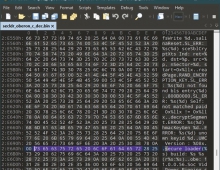
Hackers Target Microsoft Office's Vulnerabilities
Cybercriminals have moved away from using Web-based vulnerabilities in favor of MS Office ones, according to Kaspersky.
Kaspersky researchers Boris Larin, Vlad Stolyarov, and Alexander Liskin have identified changes to the threat landscape in the last two years. They compared a distribution of attacked users by targeted platforms from the end of last year with one from just two years ago. They found that cybercriminals moved away from using Web-based vulnerabilities in favor of MS Office ones — but the extent of the change surprised even them: In the past few months, MS Office, with a more than 70% share of attacks, became the most targeted platform.

Starting last year, a bunch of zero-day exploits for MS Office began to pop up. These usually begin with targeted campaign but eventually go public and end up integrated into a malicious document builder. The turnaround time has shortened substantially, however. "For example, in the case of CVE-2017-11882, the first equation editor vulnerability our expert saw, a huge spam campaign started the same day the proof of concept was published. That’s true of other vulnerabilities as well — once a technical report for a vulnerability goes public, an exploit for it appears on the dark market in a matter of days. Bugs themselves have become much less complex, and sometimes a detailed write-up is all a cybercriminal needs to build a working exploit, " Kaspersky says.
A look at the most exploited vulnerabilities of 2018 shows that malware authors prefer simple, logical bugs, since they are reliable and work in every version of Word released in the past 17 years. And, most important, building an exploit for either one requires no advanced skills, because the equation editor binary didn’t have any of the modern protections and mitigations you’d expect from an application in 2018.
An interesting side note, none of the top most exploited vulnerabilities are in MS Office itself. Rather, the vulnerabilities exist in related components.
In 2018 alone, Kaspersky found multiple zero-day vulnerabilities exploited in the wild. Among them is CVE-2018-8174 (the Windows VBScript Engine Remote Code Execution Vulnerability). This vulnerability is especially interesting, because the exploit was found in a Word document, but the vulnerability is actually in Internet Explorer.





















